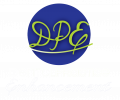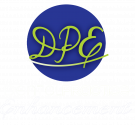Efficient management of dental accounts receivable is crucial for the financial stability and success of any dental practice. However, maintaining a healthy cash flow can be a challenge in today’s complex healthcare landscape.
In this blog post, our team at Dental Practice Enhancement provides five effective strategies and practical tips to help dental professionals reduce their accounts receivable, streamline their billing processes, and improve overall practice profitability.
1. Clear Communication and Transparent Policies
Establishing clear communication with patients regarding financial policies is essential. Make sure your patients are fully informed about your payment expectations, insurance coverage, and any out-of-pocket expenses. Provide written materials or digital resources that clearly outline your policies. Ensure your staff is trained to discuss financial matters with patients confidently and respectfully. Transparent policies and open lines of communication will help avoid misunderstandings, reduce payment delays, and foster a positive patient-provider relationship.
2. Verify Insurance Information
One of the leading causes of accounts receivable issues is inaccurate or outdated insurance information. Verify patient insurance details before each appointment and document any changes or updates. Also, stay in touch with insurance providers to track claims and ensure timely payment. To avoid billing errors that may result in claim denials or delays, regularly educate your staff on the latest insurance billing procedures and coding guidelines.
3. Streamline Billing and Collection Processes
Invest in an efficient dental practice management software that automates billing and collections. To decrease processing time, implement electronic claims submission. You can also make it easier for patients to pay their statements by sending electronic statements and reminders for outstanding balances. Be sure to establish a well-defined system for tracking and following up on unpaid invoices, and consider offering flexible payment options, such as installment plans or online payment portals, to make it convenient for patients to settle their bills promptly.
4. Optimize Treatment Planning and Financial Discussions
Before starting any treatment, thoroughly discuss the financial aspects with your patient, provide clear estimates of treatment costs and any anticipated insurance coverage, and offer alternative treatment options or phased approaches when appropriate to help patients manage their financial obligations. It’s important to educate your patients about the importance of dental insurance benefits and how to maximize their coverage. By doing this, you can reduce surprises and increase their willingness to pay for necessary treatments.
5. Implement a Collections Strategy
Despite your best efforts, some accounts may still become overdue. Implement a systematic collections strategy that includes gentle reminders, personal phone calls, and written notices. Assign a dedicated staff member or outsource collections to a professional agency, like Dental Practice Enhancement. Maintain professionalism and respect throughout the process, as preserving patient relationships is vital. However, be firm in your collection efforts to ensure the financial health of your practice.
Dental Practice Enhancement can help lower your dental accounts receivable!
Effectively managing dental accounts receivable is crucial for maintaining a financially stable and thriving dental practice. Our virtual administrators implement clear communication, verify insurance information, streamline billing processes, and implement a collections strategy, to significantly reduce accounts receivable and improve your practice’s financial performance. Remember, consistent effort and ongoing evaluation of your processes are essential for long-term success.
Call (833) DPE-FOR-U today to learn more about our services.





